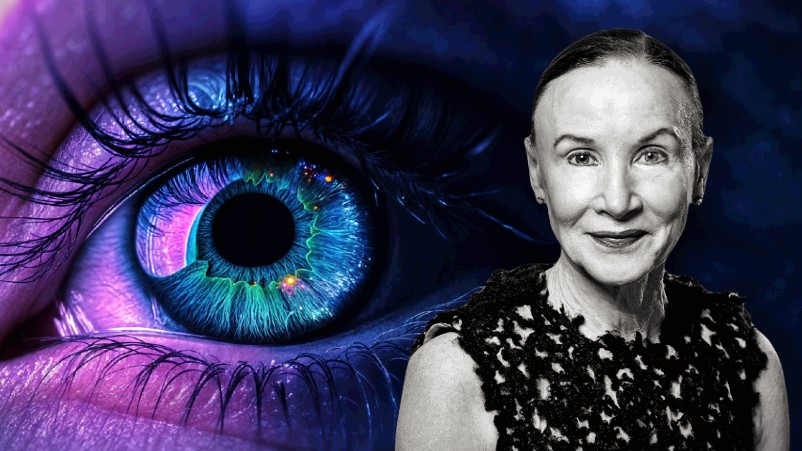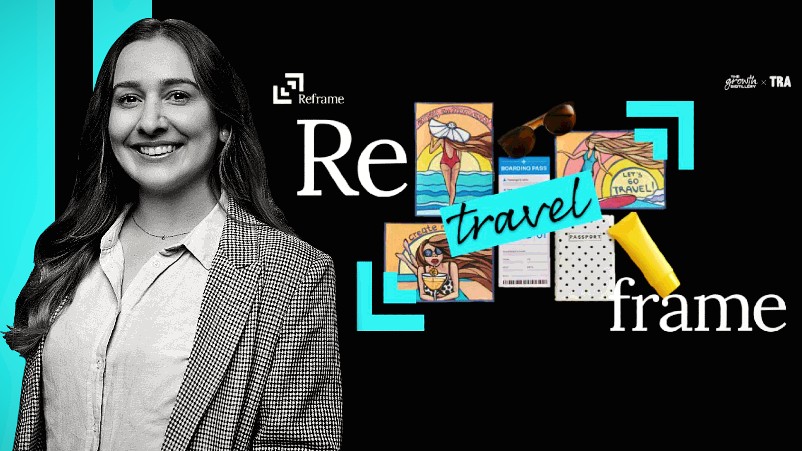LinkedIn global CMO: flick the funnel talk for 'creating and capturing demand'; 95:5 rule for in-market customers morphs to 99:1

Funnels are not good. Flick the marketing funnels – especially "everything in the middle" where it gets super confusing for finance teams. That's where the global CMO at LinkedIn, Mel Selcher, is headed. Instead, she's swapping out funnel talk for two streams: creating demand and capturing demand. For B2B marketing, historically wedded to 'demand generation', it's a hard pill to swallow. But Selcher says upper, mid and lower funnels frameworks "don't serve marketing well".
You have two jobs in the marketing department: create demand – literally everything … reaching customers at all points … and then you capture that demand once.
The 99:1 rule
LinkedIn has spent the last couple of years telling B2B marketers about the 95:5 rule. But now it’s shifted to 99:1, according to the Microsoft-owned platform’s global CMO, Mel Selcher. Which means there’s even more impetus to build brand-driven demand as macro headwinds blow business buyers back into their shells. But she underlined the rule should never dictate ratios, given crunched economies require greater flexibility than ever.
Either way, Selcher said the marketing industry has to stop talking about funnels.
“I don't think they serve our industry well at all, especially in B2B,” she told Mi3. Instead, Selcher’s boiling it down to “creating demand and capturing demand”. She wants to cut out mid-funnel talk altogether. “Everything in the middle gets confusing. You try and explain it to the finance person … it just doesn’t serve marketing well,” per Selcher. “You have two jobs in the marketing department: create demand – literally everything … reaching customers at all points … and then you capture that demand once.”
Via the 95:5 slash 99:1 rule (IAG’s Zara Curtis thinks it 98:2) that theory has started to land. The LinkedIn-backed B2B Institute and Ehrenberg-Bass Institute developed the rule – kicking around in Professor John Dawes’ head for years but never written down – in 2021 and then went large the following year at Cannes.
95:5 basically states that for B2B companies, 95 per cent of customers are out of market at any one time – and only 5 per cent are ready to buy. Hence throwing performance ‘buy-this-now’ marketing dollars at people not ready to buy what they don’t yet need is a waste of money. Instead, building ‘mental availability’ – ensuring future buyers know your brand and what it does – stands a better chance of landing when buyers are in-market. In B2B, that’s often a multiyear cycle, with lots of different people having a say – finance, operations, supply chain and the rest.
The problem is, marketers are under pressure to drive revenue now, or markets will punish them disproportionately – as experienced last week by the likes of oOh Media. Acknowledgement of a bad month wiped circa $300m, or almost a third at its nadir, from the billboard firm’s market value. For all the talk of brand building and marketing as a strategic long-term growth engine, the reality of heightened financial short-termism bites hard. And all media companies are B2B businesses, as are all agencies.
The 95:5 rule just tells you that you can't ignore the fact that most of your buyers are not buying. But you shouldn't be putting just five per cent [of marketing budget] into the five per cent that are buying. In times like this … it should be flexible.
Long and short
Selcher said LinkedIn is trying to balance the long and short of it – and while 95 per cent-plus of B2B buyers may be out of market a any one time, the rule is not about funelling 95 per cent of budgets into brand building.
“I’m incredibly fortunate to have a CFO partner who is deeply interested in the power of marketing and willing to sit down side by side and figure out how we walk the line between short-term demand – which we need to do to grow the business during a challenging time – and everything we need to do to create demand over the long-term,” she said.
Selcher, who oversees multiple business units – “two SaaS business, a media business, a subscription business and a consumer media platform” – couldn’t quantify the exact split of LinkedIn’s brand-demand marketing allocation.
“My budget is split between central functions and lines of business. Each of my lines of business has their own CMOs running a marketing portfolio. I haven’t added up [the mix] of what my overall percentage would be. But it's not 95: 5, nor should it be,” per Selcher. “Even the best practices we've seen are around 50:50, 60:40. The 95:5 rule just tells you that you can't ignore the fact that most of your buyers are not buying. But you shouldn't be putting just five per cent [of marketing budget] into the five per cent that are buying. In times like this … it should be flexible.”
LinkedIn will again talk-up the need for B2B marketers to rethink strategies – less product-focused performance selling, more emotional brand building ads that resonate across the buying supply chain at Cannes next month. It’s not just a grab to take a bigger slice of marketing budgets – it’s marketing solutions unit is now a US$5bn business – but per the platform a bid to stop client brand blowing cash that could be better invested. Per this study, 71 per cent of B2B ads are a waste of money and get little to no attention. In short, it suggests B2B advertisers should forget voiceovers and heavy text, get the logo in much earlier and lift some of the key emotional tenets of B2C advertising, although B2B marketing strategy overall remains a very different beast to B2C, per global CEO, Ryan Roslanksy.
Selcher said lifting – but equally ditching – parts of the B2C playbook is both LinkedIn and its B2B clientele’s primary marketing challenge, alongside trying to plan quarter to quarter, half to half, the given economic volatility.
“My biggest challenge is building a system that is massively agile,” and one which is B2B native, per Selcher. “A lot of marketing systems are built on the B2C. This idea that you would brief an agency and and six months later you'd have a campaign. Who the hell can do that anymore? So we're rebuilding all our systems so that we can be massively agile and massively responsive.”
At the same time, she’s trying to figure out “where to make the best [investment] bets, what we are going to prioritise as a company.”
The formats that are growing, things like video, connected TV, those kinds of things are really growing in the industry in general. So it’s probably not surprising that we would be interested in looking at those kinds of formats.
Data mining
Luckily for her, Linked in is sitting on a tonne of data to inform those bets. At Cannes last year, Roslansky presented a slide that showed the top 100 companies by influx of talent globally across LinkedIn as an indicator of which companies would likely be the next big thing. Most were B2B firms. Times have changed since then as tech washed out and VCs got real, but it’s an indicator of the trove of professional data housed within the platform.
Mi3 has asked for an Australian equivalent of that side, which local LinkedIn comms have promised to deliver. In the meantime, in absence of monthly average user numbers, comms did share some interesting local data.
Of the five fastest Australian job roles, Chief Growth Officer topped the list, followed by Chief People, Chief Product, Chief Revenue and Chief Information Security Officer. Mi3’s money is on the fifth working its way up fast.
Meanwhile it claims Gen Z – people in their twenties – now make up a fifth (19.8 per cent) of the 13 million Australian membership.
Video push
Prior to Cannes ‘23, LinkedIn is set to launch a slew of new ad formats. Selcher, flanked by corporate comms during the interview, had to keep new formats tight on pain of slow yet inventive death. But she gamely offered some hints (watch out Sky Business News).
“The formats that are growing, things like video, connected TV, those kinds of things are really growing in the industry in general. So it’s probably not surprising that we would be interested in looking at those kinds of formats,” said Selcher. “A lot of companies have really good spokespeople as well, so there might be more interest in things in that realm.”
Meanwhile she said the platform, which on 5th May celebrated its 20th birthday since officially launching under founder Reid Hoffman (after some months scribbled on the back of pizza boxes in his living room) has seen an audience boost since his erstwhile PayPal colleague Elon Musk paid handsomely to takeover Twitter and then sacked everyone.
“We've absolutely seen some of those conversations and some of those people find a home on LinkedIn,” said Selcher.
Selcher didn’t refer to Elon’s bird directly, but she said LinkedIn has “no plans” to introduce a blue tick nor relax its moderation. “We have always been a real identity platform … We have the same rules for all humans,” per Selcher. “So you don't get a pass because you have some title associated to your name.” Plus, it already has a subscription via LinkedIn Premium.
AI incoming
Next up is more AI – another bone of contention between Musk and Hoffman, both co-founders of OpenAI, in which Microsoft is reported to have invested US$10bn. The former has called for a generative AI slow down, the likes of Hoffman and Microsoft want to go larger as the latter winds the tech more tightly into its tools.
In the US, with other markets to follow, LinkedIn has launched ChatGPT-powered ‘collaborative articles’, in which its editorial team, assisted by the large language learning model Borg, start topic threads and then attracts those determined by machine learning to be the most suitable to chip in. Selcher said the function is “blowing us away”, and it’s just the start.
“As a company and as a platform, we are absolutely deep into figuring out how we continue to create more and more value for our members and our customers using ChatGPT," she said, while underlining that the AI is in service of the human members.
“How do we help professionals more easily tell their stories, share their knowledge? That's how we're thinking about the power of a lot of the generative AI technologies,” per Selcher. “We’re really embracing the Copilot [Microsoft’s ChatGPT-powered digital assistant now being woven into its suite of tools] notion.”
After that, at least for Premium members, is AI-powered profiles, resumés and connection matchmaking.
By the time the platform turns 25, the state of LinkedIn should be something to behold.


